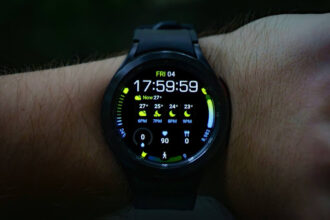In the ever-evolving landscape of digital threats, one name that has surfaced with alarming frequency is 24ot1jxa. This malware isn’t just a nuisance; it poses serious risks to your privacy and security. With its stealthy tactics and insidious nature, it can infiltrate devices without a trace, leaving users vulnerable to data theft and other malicious activities.
But what exactly is 24ot1jxa? How does this malware operate under the radar? The answers are crucial for anyone looking to safeguard their online presence. As we delve deeper into the mechanics of this threat, you’ll discover not only its devastating effects but also effective strategies for protection and removal.
Understanding 24ot1jxa is the first step in arming yourself against potential attacks. Let’s explore how you can stay one step ahead in this battle for cybersecurity.
What is 24ot1jxa?
24ot1jxa is a type of malware that primarily targets Windows operating systems. Designed to operate stealthily, it infiltrates devices without the user’s consent or knowledge.
Often disguised as legitimate software or bundled with other applications, 24ot1jxa can be challenging to detect. Once installed, it opens a backdoor for cybercriminals to access sensitive information.
This malware is not just about data theft; it can also facilitate further malicious activities like ransomware attacks and identity fraud.
Users may notice unusual behavior on their devices, such as slow performance or unexpected pop-up ads. However, these symptoms often go overlooked until significant damage has already occurred.
Understanding what 24ot1jxa is lays the foundation for defending against its threats effectively. Awareness can make all the difference in protecting your digital life from this hidden menace.
How Does it Work?
24ot1jxa operates stealthily, often bypassing traditional security measures. It typically infiltrates systems through deceptive methods like email attachments or malicious downloads.
Once inside, it establishes a connection with remote servers controlled by cybercriminals. This allows attackers to send commands or extract sensitive data at will.
The malware can manipulate system resources, slowing down devices and causing erratic behavior. Its design enables it to remain hidden from users and security software for extended periods.
Moreover, 24ot1jxa may exploit vulnerabilities in applications and operating systems to spread further across networks. This propagation amplifies its impact, making detection even more challenging.
By gathering information unobtrusively, it poses significant risks not just to individual users but also to businesses where sensitive data is stored. The extent of control exerted by this malware can be alarming.
The Devastating Effects of 24ot1jxa
The impact of 24ot1jxa can be both immediate and long-lasting. Once this malware infiltrates a device, it begins to wreak havoc behind the scenes.
Users may notice their systems running slower than usual or experiencing unexplained crashes. These symptoms often signal deeper issues stemming from malicious activity.
Data theft is another significant concern associated with 24ot1jxa. Personal information, including passwords and banking details, can be compromised without any warning. This not only affects individuals but also organizations that handle sensitive data.
Moreover, the malware can lead to unauthorized access to online accounts. Cybercriminals exploit these vulnerabilities for financial gain or other nefarious purposes.
In some cases, infected devices become part of a botnet used for larger-scale attacks on networks. The consequences extend beyond individual users to affect entire ecosystems in cyberspace.
How to Protect Yourself from 24ot1jxa
Protecting yourself from 24ot1jxa starts with awareness. Keep your software updated, including operating systems and applications. This ensures you have the latest security patches to fend off vulnerabilities.
Use reputable antivirus software that actively scans for malware. Regularly run full system checks to identify any hidden threats early on.
Be cautious with emails and links. Avoid clicking on suspicious attachments or URLs, as these are common ways 24ot1jxa spreads.
Implement strong passwords across all accounts and enable two-factor authentication where possible. This adds an extra layer of protection against unauthorized access.
Educate yourself about phishing techniques and other cyber threats. Understanding how attackers operate can help you make informed decisions online.
Regularly back up your data to an external drive or cloud service. In case of infection, you’ll have a safe copy ready for restoration without losing important files.
Steps to Remove 24ot1jxa from Your Device
Removing 24ot1jxa from your device requires a systematic approach. Start by disconnecting from the internet. This will prevent further communication between the malware and its source.
Next, access your task manager or activity monitor. Look for any suspicious processes linked to 24ot1jxa. Terminate these tasks immediately.
Following this, navigate to your control panel or settings menu. Uninstall any unfamiliar programs that you didn’t intentionally download.
It’s crucial to run a full system scan using reputable antivirus software. Ensure it’s updated with the latest definitions before scanning.
After the scan, quarantine or delete any detected threats related to 24ot1jxa. Restart your device in safe mode if necessary for thorough cleaning.
Remember to reset all of your browser settings and clear out cached data to eliminate remnants of this harmful malware.
Prevention is Key: How to Avoid Future Infections
Preventing infections like 24ot1jxa requires vigilance and proactive measures. Start by keeping your operating system and software updated. Regular updates patch vulnerabilities that malware can exploit.
Using reputable antivirus programs is essential. These tools continuously scan for threats, providing an extra layer of protection against malicious attacks.
Be cautious with email attachments and downloads from untrusted sources. A simple click could lead to dangerous consequences. Always verify the sender before opening any files.
Educate yourself about safe browsing habits. Avoid clicking on suspicious links or ads that may seem enticing but are often traps set by cybercriminals.
Consider using a VPN when connected to public Wi-Fi networks. This adds security to your online activities, making it harder for hackers to access your data.
Conclusion
The threat posed by 24ot1jxa is significant and multifaceted. Understanding its nature, how it operates, and the potential damage it can inflict on your device is crucial. Awareness of this malware empowers users to take proactive measures for protection.
By implementing robust security practices and being vigilant about online activity, you can safeguard yourself from such threats. Regularly updating your software, using reliable antivirus programs, and practicing safe browsing habits are essential steps in maintaining a secure digital environment.
If you find yourself infected with 24ot1jxa or any similar malware, immediate action is necessary to mitigate the damage. Follow the recommended removal steps carefully to restore your system’s inty.
As cyber threats evolve continuously, staying informed about emerging risks like 24ot1jxa will help ensure that you remain one step ahead of malicious actors. Prioritizing prevention significantly reduces your vulnerability in an increasingly connected world where dangers lurk around every corner.

















